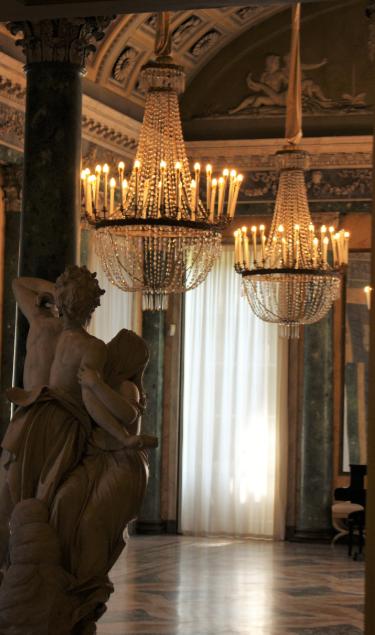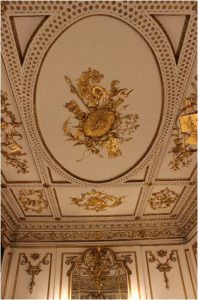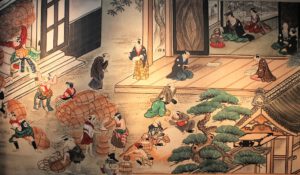 Before reading this post, please note that The Writer’s Travel Guide does not recommend travelling to Japan in the long 18th century. In all likelihood, you will not be allowed to enter the country. If you try anyway, you are committing a capital offence.
Before reading this post, please note that The Writer’s Travel Guide does not recommend travelling to Japan in the long 18th century. In all likelihood, you will not be allowed to enter the country. If you try anyway, you are committing a capital offence.
Having read this, you are still determined to give it a try? – excellent! You are of one mind with three British captains who each had an individual adventure with an island kingdom barring itself from foreign influences. And you might also find out that not all encounters have to be riddled with conflicts. Continue reading
Results for Tag: Writer’s Travel Guide
Travelling with Turner: Exploring the Swiss Alps in 1802

Around the turn of the 19th century, Joseph Mallord William Turner was a young, restless painter, always on the lookout for inspiration for his art. After having toured many parts of Britain, he planned to visit the Continent. He was especially interested in the awe-inspiring, romantic Swiss Alps – considered by many a rocky, dangerous wasteland. Thus, aged about 27, and still being an unknown artist, he decided to follow his plans through. Let’s accompany him on his first ever trip abroad.
Continue readingA Writer’s Travel Guide: Inside Napoleon’s and Marie-Louise’s Home in Compiègne
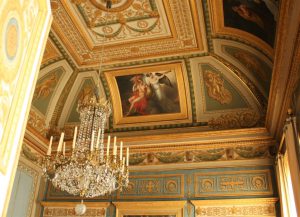 Compiègne was one of three seats of the French royal government. The royal residence we know today, the Château de Compiègne, was built for Louis XV. Napoleon restored the château after it was left gutted during the French Revolution, and he ordered it to be made habitable again in 1807. He had its layout altered, a ballroom added, and the garden replanted.
Compiègne was one of three seats of the French royal government. The royal residence we know today, the Château de Compiègne, was built for Louis XV. Napoleon restored the château after it was left gutted during the French Revolution, and he ordered it to be made habitable again in 1807. He had its layout altered, a ballroom added, and the garden replanted.
But what did the restless French emperor do with another palace? Well, he lived there with his young bride, Marie-Louise, and it was there where they spent their first night together. Continue reading
Writer’s Travel Guide: The British Tourist and Napoleonic Milan
- How to get to Milan in the 18th century
- Where to stay
- Dangers and annoyances
- Napoleonic sight-seeing in Milan
Travelling to Italy had always strongly appealed to the British aristocracy. Milan had been a favourite since Maria Theresia, sovereign of the Holy Roman Empire, remodelled the city in the second half of the 18th century: Milan featured lovely public gardens, and the fabulous opera house La Scala. But Alas!, visiting this splendid city came to a halt for British travellers from 1796 to 1814, when Napoleon had occupied Milan and most parts of Northern Italy. It was only after the Battle of Waterloo that British tourists could visit Milan again. One of the most famous tourists was Lord Byron, who spent two weeks in Milan in October 1816.
Lord Byron had always been an admirer of Napoleon. In Milan, he was lucky to get acquainted with the French essayist Stendhal (Henri Beyle by real name). Stendal had worked under Napoleon’s Secretary of State. Byron and Stendal met almost every evening for several weeks, and Byron questioned Stendal about his hero.
Some British tourists took a special interest in seeing the places of Napoleon’s power. Thus, locations connected with Napoleon became a curiosity for tourists. I have selected some of them for you in this post. Find out more about Napoleonic Milan: Continue reading
A Time Traveller’s Adventure: At the Opening of Norfolk House
Let’s leave the Romantic Age for one glamorous evening and go to the mid 18th century. We shall discover one of the major society events of the year 1756: The opening of Norfolk House in London.
Follow me to ‘All Things Georgian’, the brilliant website of Sarah Murden and Joanne Major, history detectives and acclaimed authoresses. Sarah and Joanne kindly feature my guest post about a grand event and 6 tips to succeed there as time travelling guests of the Duke and Duchess of Norfolk.
Please click here to go to the post and find out more.
Best regards,
Anna M. Thane
A Writer’s Travel Guide: 10 Facts about the Famed and Famous World of the Theatre
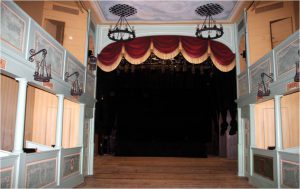 Going to the theatre was one of the most popular evening pastimes of the Regency period. It offered more than entertainment, laughter and drama: At the theatre, men and women could meet publicly in society, and classes would mix. Seeing and being seen was also part of the entertainment.
Going to the theatre was one of the most popular evening pastimes of the Regency period. It offered more than entertainment, laughter and drama: At the theatre, men and women could meet publicly in society, and classes would mix. Seeing and being seen was also part of the entertainment.
Though the theatre was popular, it was considered morally reprehensible by the conservative or pious. In Oxford, theatre groups were even banned from performing because of their allegedly negative influence on students. Continue reading
Writer’s Travel Guide: The British and the Grand Tour to the Kingdom of Naples and Sicily (Part 2)
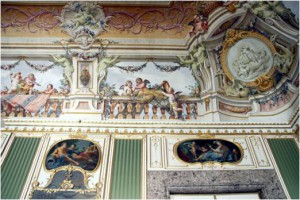 Find in this travel guide for the 18th century:
Find in this travel guide for the 18th century:
- The Antiquities Trail:
– Herculaneum and Pompeii
– Paestum - Practical Tips for Travellers
– Where to Stay
– Specialities - Danger & Annoyances
- Money & Measurements
The Kingdom of Naples and Sicily became a popular destination for British tourists with the discovery and excavation of ancient ruins in the mid 18th century. The art found at Herculaneum and Pompeii sparked the European Neo-classicism: It was the motifs from these ancient ruins that featured on stylish furnishings in England.
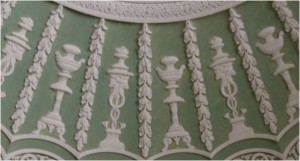 Architects, artists and their rich patrons braved the inconveniences of a long journey to see the celebrated ruins themselves.
Architects, artists and their rich patrons braved the inconveniences of a long journey to see the celebrated ruins themselves.
In this part of ‘Writer’s Travel Guide: The British and the Grand Tour to the Kingdom of Naples’ we discover the famous ancient sites as a travel destination for Grand Tourists of the Romantic Age. Continue reading
Writer’s Travel Guide: The British and the Grand Tour to the Kingdom of Naples and Sicily (Part 1)
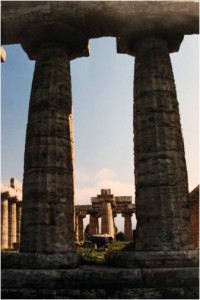 Find in this travel guide for the 18th century:
Find in this travel guide for the 18th century:
- The Destination: Facts & Figures
- Getting There & Around
- Things to See & Do in Naples
– Neapolitan Dolce Vita
– Balls, Suppers and Assemblies
– Culture & Entertainment - Nature & Activities
– Climbing Mount Vesuvius
– Watersports
For British travellers, Italy was an essential destiny of the Grand Tour. However, most travellers didn’t go farther than Rome. Only the adventurous or scholarly continued to the South, to ‘The Kingdom of Naples and Sicily’. This was to change with the discovery and excavation of the ruins of Pompeii, Herculaneum, and Paestum in the mid 18th century.
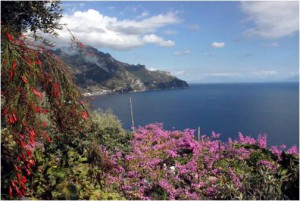 Eager to see the sites of Antiquity themselves, architects, artists and their rich patrons ventured down the long road to Naples, braving brigands, mosquitoes and heat.
Eager to see the sites of Antiquity themselves, architects, artists and their rich patrons ventured down the long road to Naples, braving brigands, mosquitoes and heat.
- How did they travel?
- What would they see and do in 18th-century Naples?
- Which sites would they visit?
- Where would they stay?
With this post, Regency Explorer provides a travel guide to the ‘Kingdom of Naples and Sicily’ for travellers of the Romantic Age. Continue reading
Adventures for Regency Enthusiasts: The Country House After Dark
Have you ever wondered
- how dark it was in an 18th century country house after sunset?
- what you can see in a room lit only by candles?
- how it feels to enter a room illuminated by several crystal chandeliers?
You could arrange an experiment at your home by lighting some candles at night. But this wouldn’t quite reproduce the lighting conditions of a country house, as there are less gildings, reflecting mirrors and chandeliers in the average apartment of our times.
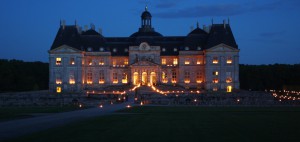 I thus set out to experience a historic house after nightfall. My central question: What are the lighting conditions and how can a Historical Novel Writer depict them properly in a novel?
I thus set out to experience a historic house after nightfall. My central question: What are the lighting conditions and how can a Historical Novel Writer depict them properly in a novel?
Let me take you to the Château de Vaux-le-Vicomte, a grand chateau in France. We will wander its rooms and enjoy its park adorned with thousands of torches.
Gossip Guide to the Kingdom of Naples: Inside the Palace of Caserta
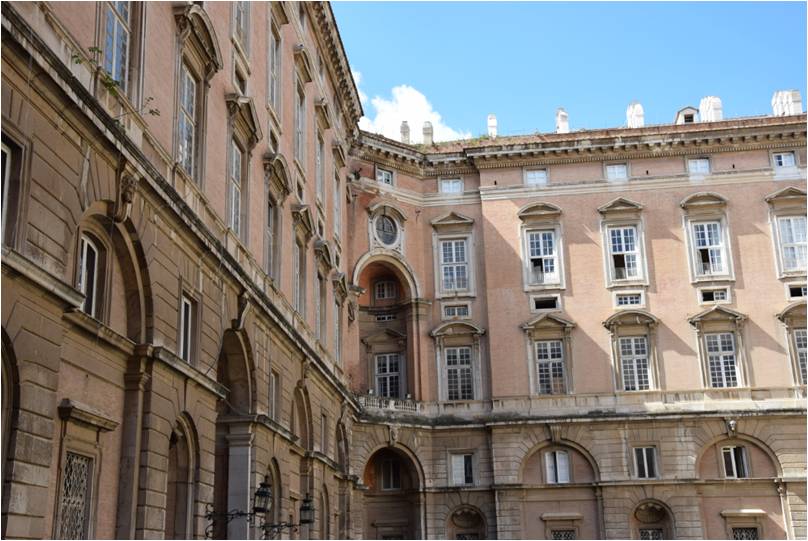
Find in this gossip guide for the 18th century:
- Palace, Pomp and Politics
- The British Ambassador as Tomb Raider
- Love & the Palace
- Shocking: Emma and Nelson!
- A King from France & the English Princess

